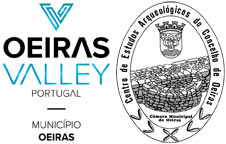De vuelta al Mediterráneo. Los contactos e intercambios del sur de la Península Ibérica durante el Campaniforme y El Argar con el Egeo y Levante (2500‑1600 AC)
Palavras-chave:
South Iberian Peninsula, Bell Beakers, Early Bronze Age, Argar, Trade, Minoan Crete, LevantResumo
Despite the remarkable change that Bronze societies show towards 2200 BC, with respect to the preceding Chalcolithic ones, it is importante to highlight that many novelties were really present since the Late Chalcolithic and indicate continuity. These include the location on terraced hills of difficult access, the occupation of islets and coastal headlands, the knowledge of huts with a rectangular or oval shape, individual burial, even underneath the settlements, the use of burnished black pottery and chalice shaped vessels, the diadems or the combat with javelin and halberds with the blade attached to the handle by means of rivets. Among the clearest breaks are those of an ideological nature, such as the disappearance of the eye and anthropomorphic idols, or the solar decorations on ceramics, linked to the abandonment of previous religious beliefs. As novelties it is worth mentioning the use of solid rectangular bastions and the burial in rectangular stone cists present in the Aegean. At this stage of the Early Bronze Age, Asian and hippo ivory arrived from the Levant, probably via Crete, while Argaric ships obtained African elephant ivory.
A second phase began in the Middle Bronze Age around 1925 BC, and coincides with the first Minoan Old Palaces during the Middle Minoan IB and IIA, 1925/1900‑1800 BC, when the introduction of the pithoi burials took place. At that time it continued to reach the Iberian Peninsula, probably also with the intermediation of Minoan ships, hippo ivory from Levant, with a workshop at Illeta dels Banyets (Alicante), and African elephant ivory with another workshop in Fuente Álamo (Almería). In this stage the exploitation of silver increased, to a large extent from Linares‑La Carolina (Jaén), which could also be commercialized towards the Aegean.
The last phase should have started with the Middle Bronze Age II, from 1825 BC onwards, contemporaneous with the beginning of the New Palaces in Crete, from Middle Minoan IIB, 1800 BC, with new imports such as the faience and amber necklace beads, perhaps Baltic, and painted frescoes appear at La Almoloya (Murcia) around 1650 BC.
In the Southeast, copper production increased in Peñalosa (Jaén), even circulating as ingots, while alluvial tin, and perhaps alluvial gold, must have started to come from the Atlantic façade, as tin‑bronzes increasing, which could also be exchanged for products of the Eastern Mediterranean. The most logical option for these contacts with Crete or the Levant would be the model of the ships of Tarshish, a three‑year expedition, which provided certain valuable raw materials with some regularity.
Downloads
Publicado
Como Citar
Edição
Secção
Licença
Os artigos publicados são da exclusiva responsabilidade dos Autores.
É expressamente proibida a reprodução de quaisquer imagens sobre as quais
existam direitos de autor sem o prévio consentimento dos signatários dos artigos
respectivos.




